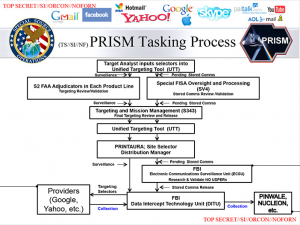American Dirty Hands and Chain of Command
[Tenet] called for initiating intelligence contact with some rogue states such as Libya and Syria that he said might be helpful in trying to destroy al Qaeda. For the CIA to obtain helpful information against the terrorists, they might have to get their hands dirty. — Bob Woodward, Bush at War
On September 15, 2001, George Tenet presented Cofer Black’s plan to respond to 9/11 to George Bush. It included rendering suspects to allied torturers including Egypt, partnering with rogue regimes including Bashar al-Assad’s, and ultimately capturing and torturing suspects ourselves.
On September 17, 2001, George Bush implemented that plan by signing a Memorandum of Notification reflecting vague outlines of it.
George Bush’s signature on that document led directly the torture of Ibn Sheikh al-Libi in Omar Suleiman’s hands and Binyam Mohammed’s torture in Pakistani custody, both before DOJ’s Office of Legal Counsel gave its sanction to torture. In addition, it led to Maher Arar’s torture in Assad’s hands outside the terms permissible in our rendition program.
Yet as these details of George Bush’s personal implication in torture became clear, President Obama hid it, both with repeated state secrets invocations and by hiding official confirmation of the existence of that document with Bush’s signature on it. The Administration succeeded in hiding that official confirmation by arguing — just last year! — that it was still relying on that document that also endorsed partnering with Assad. (There’s reason to believe that that document which authorized partnering with Assad also served to authorize some of our drone assassinations, including at least the first attempt against Anwar al-Awlaki.)
Meanwhile, the most independent assessment of the August 21 chemical weapons strike — from Human Rights Watch — still has the same gap as every other case does: while it concludes the CW were launched by Assad’s regime, it provides no evidence that it was launched on his orders.
The evidence examined by Human Rights Watch strongly suggests that the August 21 chemical weapon attacks on Eastern and Western Ghouta were carried out by government forces. Our basis for this finding is:
- The large-scale nature of the attacks, involving at least a dozen surface-to-surface rockets affecting two different neighborhoods in Damascus countryside situated 16 kilometers apart, and surrounded by major Syrian government military positions.
- One of the types of rockets used in the attack, the 330mm rocket system – likely Syrian produced, which appear to be have been used in a number of alleged chemical weapon attacks, has been filmed in at least two instances in the hands of government forces. The second type of rocket, the Soviet-produced 140mm rocket, which can carry Sarin, is listed as a weapon known to be in Syrian government weapon stocks. Both rockets have never been reported to be in the possession of the opposition. Nor is there any footage or other evidence that the armed opposition has the vehicle-mounted launchers needed to fire these rockets.
- The August 21 attacks were a sophisticated military attack, requiring large amounts of nerve agent (each 330mm warhead is estimated to contain between 50 and 60 liters of agent), specialized procedures to load the warheads with the nerve agent, and specialized launchers to launch the rockets
Obviously Assad has not yet publicly named — much less condemned — anyone within his regime for doing this (but then, only about 14 Americans have ever paid a price the systematic torture authorized by that Bush signature). If this deal with the Russians actually happens, naming and prosecuting the persons responsible for the August 21 attack should be part of the agreement.
But there is a fundamental problem with America launching a war against Assad for the August CW attack based on chain of command arguments (or “common sense,” as its most recent incarnation has it). That’s because, with all the legal problems surrounding any intervention on our part (especially without UN sanction, which may change under the Russian deal), there are such clear and ongoing instances where, even with clear evidence of human rights violations done under nothing but Presidential authorization, the US doesn’t hold its own responsible.
There was a time when US violations of human rights norms weren’t so clearly documented (though the definitely existed). But now that they are, to claim we have the moral authority to hold Bashar al-Assad responsible based on a chain of command argument when we won’t even hold our own responsible for partnering with him in human rights crimes is particularly problematic.
As human rights hypocrites ourselves, that makes us not even global policemen, but rather simple enforcers when it serves our geopolitical interests.

